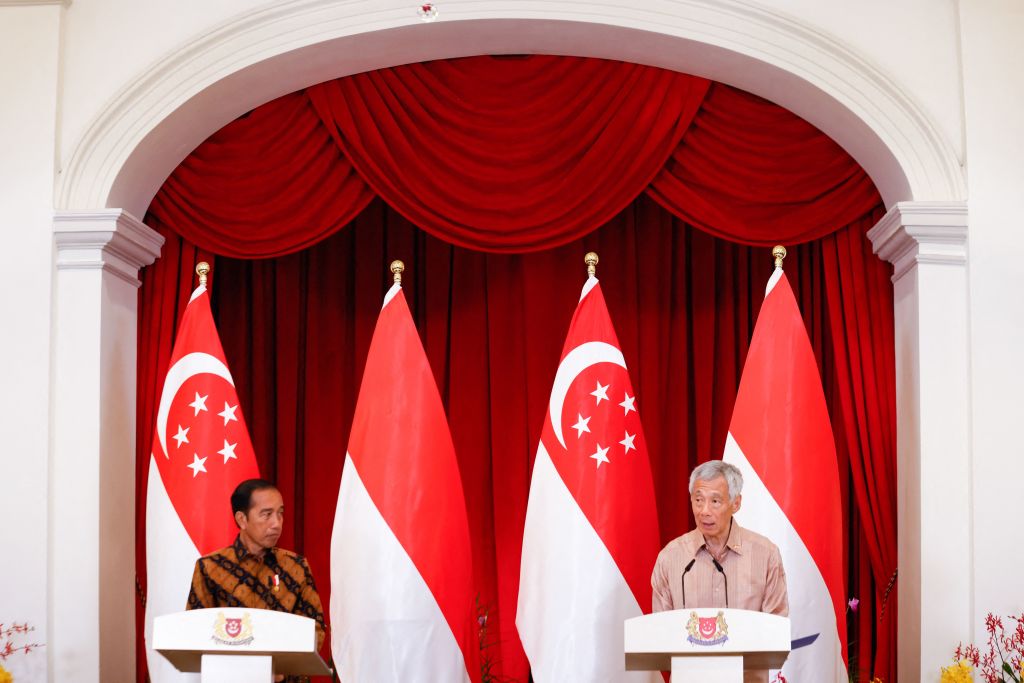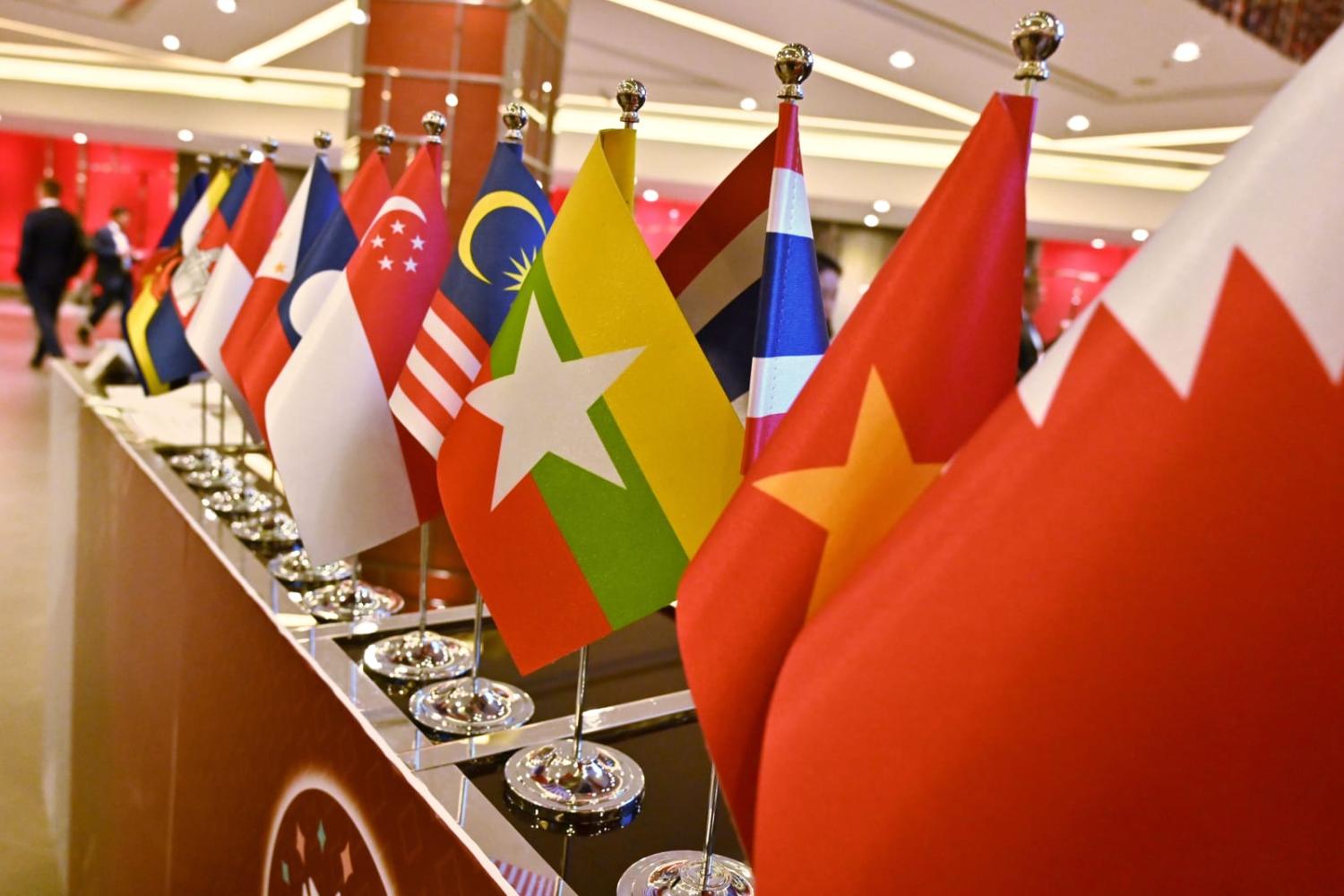A special Interpreter series ahead of the 2024 ASEAN-Australia Special Summit in Melbourne, 4-6 March. Read more articles in this thread.
Southeast Asia is in the spotlight for many of the wrong reasons – among them, the ongoing military conflict in Myanmar, the continuous outflow of Myanmar’s Rohingya refugees, and the escalating tension between the Philippines and China in the South China Sea.
Against this backdrop, Australia will host the leaders of the ten ASEAN members next month for a special summit in Melbourne. It will be one of the swan song events for Indonesia’s Joko Widodo and Singapore’s Lee Hsien Loong, the two most experienced leaders in ASEAN, both of whom will step down this year.
What will the Melbourne summit cover? Most likely, the agenda will address less controversial but still critical areas such as climate change, shared interests in the maritime domain, and exploring closer economic cooperation. Issues of traditional security, a sensitive topic for the regional organisation, will likely be avoided. On the South China Sea, Australia and ASEAN may issue a joint statement expressing concerns about the situation without blaming any party – a typical ASEAN approach to avoid offending China.
But the big issues can’t be long ignored. The collapse of the Myanmar junta cannot be discounted. It may take place without much warning, similar to the fall of the Western-backed Afghanistan government to the Taliban in August 2021. Buoyed by recent success on the battlefields, some Myanmar insurgent groups have rejected political dialogue with the junta.
While the Myanmar military conflict is primarily a domestic affair, its impact is felt in parts of Southeast Asia. The outflow of Myanmar Rohingya refugees to Myanmar’s neighbours has destabilised security. There have been attacks against Rohingya refugees in Indonesia.
Relations between extra-regional powers impact the region, too. The increasing US-China rivalry could derail Southeast Asia’s security environment. China continues to aggressively assert its claim in the South China Sea. A few years ago, Chinese ships clashed with Vietnamese maritime enforcement vessels in their disputed area. Now, the Philippines is facing the brunt of China’s aggressive tactics – the Chinese use water cannons against Filipino ships in the disputed waters.
Backed by the United States, the Philippines has taken a harder position against China over its maritime disputes, causing anxiety among other ASEAN members. The ongoing confrontation around the Second Thomas Shoal may see hostilities escalate. The Philippines’ plan to establish a permanent base at Second Thomas Shoal may push Beijing to up the ante in its maritime dispute with Manila.

US-China rivalry on the economic front may derail ASEAN’s journey to become one of the largest economies in the world. As the world transitions into clean energy, several ASEAN members, such as Indonesia, are attempting to position themselves as critical players in industries such as electric vehicle production. Washington’s attempts to limit Beijing’s participation in the electric car industry may derail Jakarta’s ambition to be an industry player. Furthermore, the trade disputes between Beijing and Washington can affect ASEAN member economies given the regional reliance on trade.
These crises together create an arc of uncertainties for Southeast Asia. Yet, ASEAN’s responses are grounded by consensus decision-making and non-intervention policies, its operating framework since the grouping was founded in 1967. As a result, China took the lead in negotiating ceasefire agreements between the warring parties in Myanmar, while ASEAN seems to be incapable of responding to the security threat posed by an external power against the Philippines, one of its original members, in the South China Sea.
To compound the challenges that ASEAN is facing, the departure of Widodo and Lee will see leadership transitions in two key member-states, while another struggles with political uncertainty. Indonesia will go to the polls on 14 February, and Lee will likely hand over the premiership to his deputy towards the end of 2024. Meantime in Malaysia, rumours persist about an attempt to topple the current Prime Minister Anwar Ibrahim.
As a primer for the Melbourne summit, The Interpreter will feature a series of authors from across the region in the coming days, covering the foreign policy priorities of the countries involved, as well as themes relating to maritime security, climate change, and economics.
The world looks bleaker for ASEAN in 2024. But ASEAN is not alone. Middle powers such as Australia and Japan are potential partners that ASEAN can work with to shape regional security and economic environments. But first, ASEAN must exercise its agency to address regional crises and be visible in dealing with them, such as the Myanmar conflict and the South China Sea maritime disputes.
Suppose ASEAN could not even act cohesively to deal with regional crises? In that case, the regular refrain about “ASEAN centrality” amounts to just an illusion – a Shangri-La bubble while outside powers create and dictate reality.

